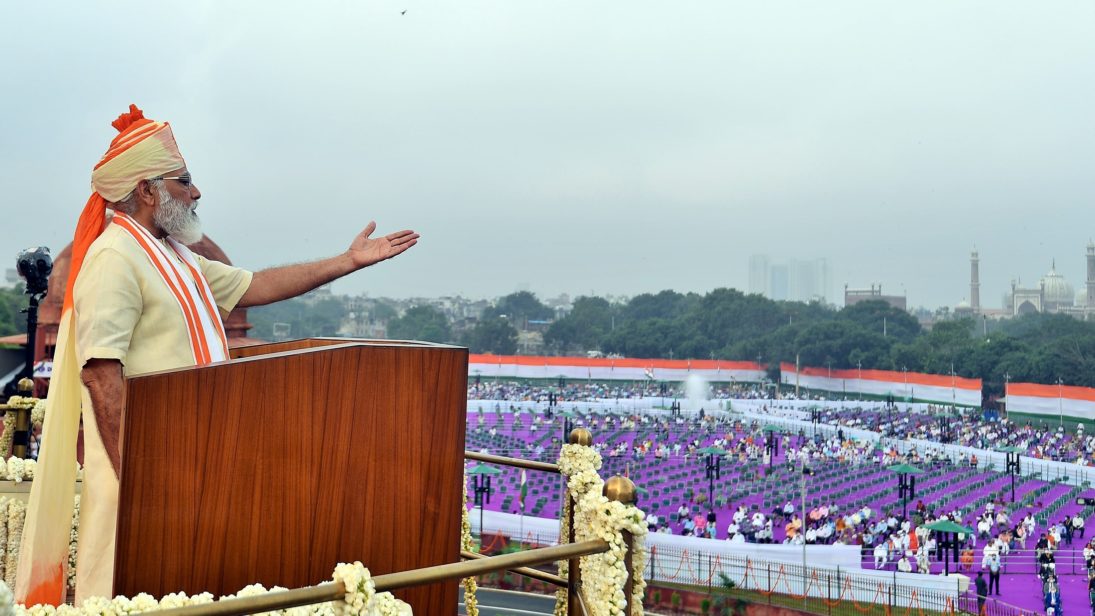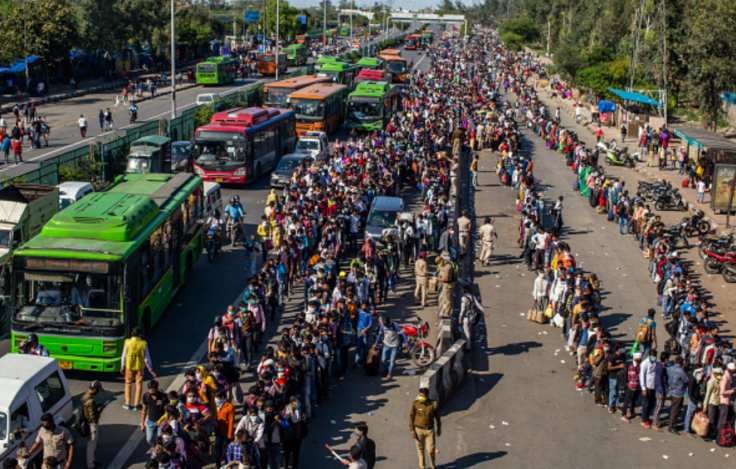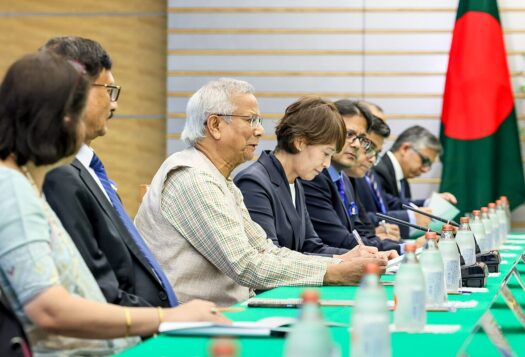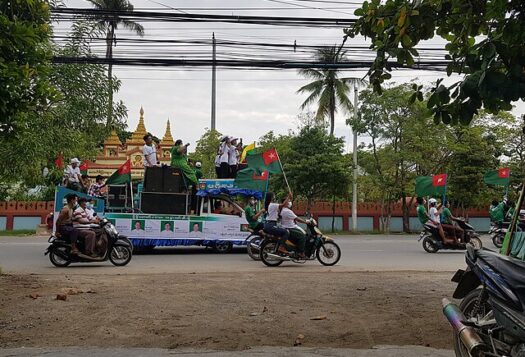
2020 will unfortunately be remembered as the year of the COVID-19 pandemic. Like other countries, India has been grappling with the social and economic fallouts of COVID-19, on top of the public health catastrophe. Besides the pandemic, two other episodes dominated the India story in 2020: Delhi’s communal riots and the border conflict with China. Emerging close on each other’s heels, these have been consequential events for India domestically and internationally. 2020 has been a year of overwhelming security challenges for India both as a nation and as an emerging power. As India builds its influential leadership position in the Indo-Pacific, the domestic political situation, public health crisis, and border aggression have tested its ability to address a broad spectrum of challenges simultaneously.
Domestic Politics: The CAA and the Delhi Riots
The Indian Parliament passed the Citizenship Amendment Act (CAA) on December 11, 2019 which amended India’s Citizenship Act of 1955, to make foreign illegal migrants of six religious communities, excluding Muslims, coming from Afghanistan, Bangladesh, and Pakistan eligible for Indian citizenship. Nationwide protests broke out in India in December 2019 over the discriminatory nature of legislation and the proposed National Registry of Citizens (NRC); the protests spilled into 2020. Shaheen Bagh, a neighborhood in Delhi where a peaceful sit-in protest was organized by women, became the most iconic symbol of the anti-CAA resistance in India and inspired other sit-in protests across the country. At one such protest in east Delhi, anti-CAA and pro-CAA groups clashed after protestors blockaded the gates to the Jaffrabad metro station. Violence ensued on February 22, 2020 when riots broke out at the Jaffrabad site and other neighboring localities; these soon morphed into communal riots that lasted almost a week.
As India builds its influential leadership position in the Indo-Pacific, the domestic political situation, public health crisis, and border aggression have tested its ability to address a broad spectrum of challenges simultaneously.
The anti-CAA protests have been the marker of an extraordinary domestic churning in India set in motion over the past few years. The riots were the tragic symptom of an extremely polarized political discourse and deep schisms within Indian society. However, domestic political outpouring and select international reactions aside, the events had little international consequences for the Indian government. The CAA controversy triggered diplomatic spats with Pakistan and Bangladesh, but it did not thwart U.S. President Donald Trump’s state visit to India in February, even though the riots unfolded while the leaders met in Delhi. The protests were brought to an abrupt halt when the pandemic arrived. The Indian government, all too aware of the possibility of the protests resurrecting as the pandemic fades out, has kept the political discourse over the CAA and NRC considerably muted.
Public Health: COVID-19
By July 2020, India was the pandemic’s third worst affected country, after the United States and Brazil. The number of cases increased exponentially even as the mortality rate remained relatively low across India. In subsequent months, as the country gradually emerged from one of the world’s harshest lockdowns, cases peaked variably across different states in India, increasing the total tally of affected persons in the country significantly. The mammoth task of mobilizing emergency resources to attend to the health crisis on one hand and maintain an already slowing-down economy on the other became a major predicament for the Indian government. To add to this, the sudden imposition of a complete lockdown triggered another colossal migrant crisis across India—with tens of thousands of domestic migrant laborers stranded without work and money beginning to move toward their hometowns and villages. Some even walking hundreds of kilometers in the absence of functional public transport facilities.

For a country where political discourse and the news media have become extremely polarized, the actual social and economic impacts of the pandemic and lockdown on different sections of the population remain unclear. Still, India’s response to this crisis has revealed its severe institutional, budgetary, and capacity limitations. This was demonstrably visible at the level of state governments who are key responders to such crises; public health being a “state” subject responsibility as per India’s constitutional mandate. Most states in India struggled to mobilize logistics and human resources, and performed poorly on critical aspects like contact tracing and early detection of cases.
Meanwhile, Prime Minister Modi’s government at the center grappled with the political and strategic challenges of a contracting economy. By mid-2020, the Indian economy went into recession and the GDP shrunk by 23.9 percent in the April-June quarter and the unemployment rate rose to a shocking 23.48 percent. In the following months, economic activity began to pick up gradually whereas political activities resumed rather rapidly, including a major state election in Bihar, and several by-elections and full-scale political campaigning that were carried out in India in the midst of the pandemic. In November, Jammu and Kashmir marked its first electoral process since the abrogation of Article 370 last year, in the form of District Development Council elections. Given the elections that have already taken place, the COVID-19 crisis is unlikely to deter the five state legislative assembly elections coming up in 2021.
Defense and Foreign Policy: The Sino-Indian Border conflict
In a move to capitalize on the global panic generated by the pandemic and to rake up disputes in its neighborhood through military intimidation, China managed to pull a fait accompli with India on the Line of Actual Control (LAC) in the Ladakh region in May this year. The border standoff escalated after the Galwan Valley clash on June 16, which occurred in the midst of military parleys between the two sides for “partial disengagement” and de-escalation to end the standoff. In the first official admission of the enormity of the situation, in August 2020, India’s foreign minister Dr. S Jaishankar said that the standoff with China was the “most serious situation after 1962.” A series of high-level statements thereafter from India’s political and military leaderships indicated that India was preparing for conflict in the long haul.
The 2020 border standoff is a watershed event in India-China bilateral relations. First, it effectively broke the Indian illusion that the LAC with China is a “disputed yet peaceful” border. By the end of August, massive troop build-up and heavier-caliber weapons had made their way to the western LAC sector and both sides made strategic gains by occupying tactical positions in the Ladakh region. The conflict triggered emergency arms acquisitions by India, with the government giving enhanced financial powers to the armed forces to make emergency procurements of ammunitions from foreign suppliers.
Second, after months of unsuccessful attempts to douse the crisis, New Delhi is being pushed to revise its political, diplomatic, and military calculations vis-à-vis Beijing. Over the past few years, New Delhi has been attempting to carefully balance maintaining bilateral ties with China while taking the role of regional balancer. The border conflict is likely to tilt that approach toward the latter. The slew of economic measures, beginning with the more reactionary Chinese apps ban to the more strategic trade and investment curbs and a cautious rethink over allowing Huawei to build India’s 5G networks point to the shifting approach. Diplomatically, an enjambment to the “Wuhan Spirit” and “Chennai Connect” does not appear to be in sight. On the other hand, even amidst questions about the strategic objectives of the Quadrilateral Dialogue (QUAD), India is moving toward consolidating the framework to address its economic and security imperatives in the Indo-Pacific region.
Third, the border standoff has also played up the nightmare scenario of a two-front war with China and Pakistan, forewarned by successive Indian military leaderships, including the current Chief of Defense Staff General Rawat and the Chief of Army Staff General Naravane. With the LAC flaring up alongside a long-restive Line of Control (LoC) with Pakistan, India’s political and military leaders are being compelled to think through the possibilities of a two-front war outside of the old prism of Pakistan as the primary (deterrence) front and China as the secondary (dissuasion) front. Meanwhile, the India-Pakistan relations remain at its lowest ebb in years.
2021: What to Watch
Economic recovery and growth will be India’s primary objective in 2021. For this, India will need to collaborate with like-minded international actors on one hand and consolidate the domestic polity on the other hand. The latter will likely be a serious challenge and could have an effect on the former. The recent farmers’ protests against new legislations that seek to deregulate farming in India have elicited strong domestic support and sympathy from some international quarters. A recent case in point here is India’s refusal to attend the Canada-led group of foreign ministers meeting to deal with the COVID-19 pandemic after Prime Minister Trudeau’s remarks supporting Indian farmers right to peacefully protest the new farm laws.
With the LAC flaring up alongside a long-restive Line of Control (LoC) with Pakistan, India’s political and military leaders are being compelled to think through the possibilities of a two-front war outside of the old prism of Pakistan as the primary (deterrence) front and China as the secondary (dissuasion) front.
Many states in India are expecting a second wave of the coronavirus transmission in January 2021. Even with an effective vaccine in sight and India’s successful past experiences with mass-scale immunization programs, making the COVID-19 vaccine available to all at affordable costs will still be a daunting task. 2020 should be a grim reminder that serious flaws impairing India’s public health sector are to be addressed urgently.
On the diplomatic front, India is likely to double its efforts to ensure continuity in Indo-U.S. cooperation on issues related to trade, technology, the global economic order and geopolitics of the Indo-Pacific. There is hope within Indian government and industry that the incoming Biden administration would build upon the progress made in Indo-U.S. relations during the President Trump’s tenure. Of concern for India, however, would be the Democrats’ view on Kashmir and on how the Indian government handles domestic dissent in the country, which could become significant factors in bilateral relations.
Should 2021 be the year of greater consolidation of international efforts to tackle the growing challenges from China, India is likely to play a significant role. Even amidst efforts to diffuse the border conflict diplomatically at lower levels of military escalation, the intensified territorial and political dispute will drive New Delhi’s efforts toward reducing economic and trade reliance on China and making greater institutional investments in multilateral coalitions that exclude China.
The year 2021 will bring its own set of challenges for India. How effectively the country and its people emerge from the pandemic, the constant domestic turmoil, and an adverse regional climate will be key determinants of how India manages to face the new challenges ahead.
Editor’s Note: SAV contributors from across the subcontinent recap the most significant political, economic, and strategic developments in South Asia in 2020 and analyze what opportunities and challenges lie ahead for each country in 2021. Read the full series here.
***
Click here to read this article in Urdu.
Image 1: via Press Information Bureau, India
Image 2: Yawar Nazir via Getty Images


